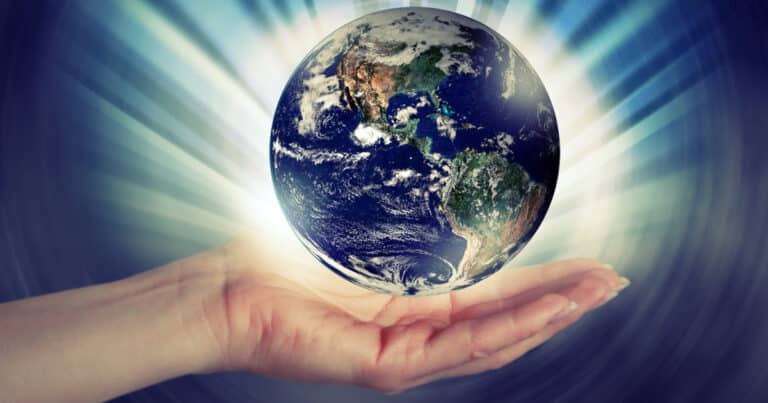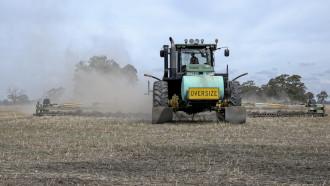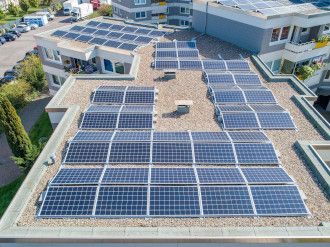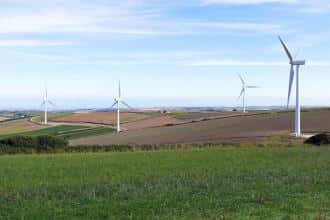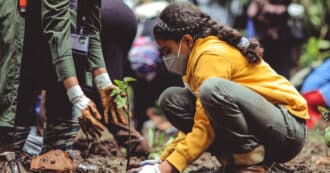By Matthew Mausner – When humans were primarily living as small nomadic bands, their impacts on the ecosystems they lived in, and seasonally migrated to, were fairly limited by the relatively small scale of their activities, such as hunting and gathering and so environmental sustainability was the norm. Humans were living within the Earth’s resource limits, providing the ability of future generations to survive.
However, even ancient civilizations had negative impacts on their environments and local ecosystems – environmental sustainability is not an exclusively modern issue. Nonetheless, modern civilization’s rapid growth continues to deplete our natural resources and harm our ecosystems.
With the advent of agricultural civilizations, humans have encouraged economic growth, including modifying the environment to grow the crops or animals they prefer and ‘weed out’ or eliminate pests, predators, or vermin.
Can a Civilization be Sustainable?
Every civilization has faced the challenge of economic growth without causing the ecosystems they depend on to collapse. Economic growth needs to be achieved without compromising the ability of sustainable development.
We call the ability of the civilization to keep its resource use commensurate with the ability of the ecosystem to replenish itself through the natural cycles, sustainability.
Of the hundreds of civilizations that we know of in history and archaeology, the vast majority- more than 100 have collapsed, some with hardly a trace due to the lack of balance between the consumption of resources and development. Environmental sustainability is not easy.
Modern Global Civilization: Higher Stakes for Environmental Sustainability
In the developed world, those impacts have grown to include systems of draining swamps, practices of mining vast holes in the ground, expelling pollutants into the air leading to climate change, using chemical fertilizers that alter the soil and water quality, and we have built machines and techniques for mass animal husbandry, fishing, global transportation, and more.
With the expansion and integration of almost all countries into an intertwined global economy, as well as a push for increased globalization of businesses and organizations, we have made the world far more capable of sustaining a large population, even in places with little environmental resources of their own.
However, as a consequence of this long term global expansion of economics that creates economic development and jobs, we are simultaneously exhausting resources all over the planet.
In addition, we are polluting far more than any previous civilization, and our pollution reaches ecosystems in the far corners of the earth.
What Does it Mean to be Sustainable?
As our civilization has advanced, so has our understanding of our world, and so have our disciplines of science, biology, ecology, forestry, oceanography, climatology, and many more related fields. As this understanding has become more sophisticated, so has our appreciation of the complexity of our finite globe’s interconnected ecosystems.
We can now see that any ecosystem could have a fragile ecosystem or a resilient one, could have thin or easily damaged soils, or thick, rich or naturally regenerating soils. We also can see how interrelated all the world’s ecosystems are.
If humans’ management of the environment provides the ability of future generations to continue to survive and prosper, we call it sustainable.
Human Impact on Environmental Sustainability
Human environmental impact can at times be positive and support, or amplify local cycles that allow species and soils to regenerate for future generations. Or, it can be destructive in a variety of ways, sometimes leaving behind deeply damaged, impoverished, or destroyed ecosystems, leading to a collapse of that civilization and/or the species who used to exist near it.
The first civilization of which we have historical records, Sumer, exhausted its soils in a few hundred years through unsustainable farming practices, causing salinization and leaving behind a hard-baked clay where once had been fertile grasslands.
Many, many other civilizations have met similar fates for what were likely similar reasons, from the Anasazi to the ancient Maya to Angkor Wat. Sometimes, all we have left are ruins, eroding in a jungle or desert, and a mystery.
Sustainability and Civilizations
In some cases, civilizations have avoided that fate by creating ways to live with the regenerative capability of their lands. We will share a few examples:
In the Dark Ages in Europe, the ‘fallow’ practices, of allowing a rotating parcel of every farm to ‘rest’ and go wild for a year or more to replenish nutrients in the soil, made that civilization’s use of its temperate soils sustainable for more than a thousand years.
In medieval Japan, the Shogun instituted a sustainable forestry policy, reversing a dangerous deforestation, empowering local village heads to manage the regrowth and harvest of trees in every local region, and successfully reforesting Japan. A success which continues to today that reduces the impact on climate change.
In much of India and China, careful reuse of animal and human waste into fertilizer for farming, paired with various irrigation management practices and inventions, has allowed them to continue farming densely populated land for the long term.
Environmental Sustainability Since Industrialization
It may well be that even before agriculture, humans caused massive extinctions to large animals. For example, on arriving in Australia up to 60,000 years ago and in North America around 11,000 years ago. Many civilizations have probably contributed to ecological catastrophes related to their collapses.
However, since the advent of the industrial revolution in the 1700s, our ability to damage the environment, both locally and globally, has increased exponentially.
New Dangers to Environmental Sustainability
Industrial civilization introduced the use of large scale power, burning fossil fuels such as coal, oil, natural gas, shale, and other variants which are not renewable. Industrial development has generated a massive range of carbon emissions, substances, wastes, and leftovers, many of which are toxic.
Industrial agricultural management has used artificial pesticides, fertilizers, and other techniques that massively pollute natural resources and affect the health of the consumer of the produced food.
Industrial production has generated plastic, metal, resins, and composites which do not easily biodegrade and are incredibly harmful to the health of our ecosystems, particularly marine wildlife, that often get trapped in plastic debris.
Environmental Sustainability Influenced By Industrial Civilization
All of these are considered to be destabilizing to the environment both locally and globally, and are having effects which call into question our ability to live in the present without compromising the future. Unlike previous civilizations which caused damage in their regions and which could collapse without necessarily affecting the rest of the planet, our new global united nations risks the sustainability of all of us at once.
The dangers are not just local overfishing, overhunting, depleting a species, or exhausting quality top-soils, as in most previous civilizations that collapsed. Now we risk pollution causing comprehensive collapses of large ecosystems. Some examples are: the Soviet destruction of the Aral Sea or the desertification of the soil.
As a result of fossil fuel pollution, we risk consequences to our atmosphere, ice caps, ocean currents, climate change and global warming that could lead to a domino effect of global ecological collapses.
Whether via irresponsible nuclear power or weapons, or the non renewable environmental impact of our ‘advanced’ technologies, we know we risk making the planet inhospitable to life as we know it.
Alternative Paths to Environmental Sustainability
While it is hard to imagine that we could instantly alter, change or stop the momentum of a global interconnected civilization built on a great many unsustainable and destructive practices, there still may be hope.
Environmental management and development, resulting from advancing technology can reduce pollution or the impact of consumption.
More and more renewable energy is being used, including wind, solar, hydropower, geothermal energy, and others, for many reasons including idealism, aesthetics, economics, subsidies, and sometimes corporate calculations.
More cities are being built around pedestrian and bike infrastructures. People are spurning the profoundly unsustainable car-centric suburban consumer market culture, in favor of either dense cities or local rural life, reducing their impact.
And consciousness is being raised both from ancient value systems such as indigenous peoples’, and from modern holistic and scientific understandings of our environment, to change our collective practices, such as an increase in recycling, plant protection, less fuel consumption, green business management which will lead to sustainable development.
Poverty, Population, and Environmental Sustainability
Research shows that there are trade-offs for every change we make to live more sustainably.
When one takes a long term view, certain fascinating patterns and opportunities emerge. Many critics question whether sustainable development is possible for burgeoning third world populations aspiring to a western standard of living, with modern appliances and energy use.
A university education is a great predictor of a declining birth rate, which is probably the single biggest hope we have of keeping global population within sustainable limits. Programs to increase university studies will allow future generations to meet the balance necessary for sustainable development.
Fossil fuels create pollution, but when their relatively efficient use replaces burning wood, charcoal or garbage among the third world poor, it net decreases both pollution and damage to the environment dramatically. Examples of this can be seen in places like India, China, and sub-Saharan Africa.
A Glimmer of Hope for Environmental Sustainability
Without compromising the ability of future generations to regenerate, it is possible to address and shape the needs of the present with awareness of these interconnected environmental management methods.
The human relationship to the environment is necessarily complex, but like beaver dams or birds’ nests, it’s possible for our existence to weave into a web that includes our development without compromising environmental sustainability.
Whether it is by planting forests and plants, protecting species and ecosystems, channeling irrigation to previously arid regions, encouraging specially bred fungus to process and ‘eat’ our plastic waste, or any of a hundred new and creative environmental programs we find to engage in we have hope to grant the ability of future generations to survive and also thrive.
We can and must blaze a path to collective environmental sustainability. We don’t really have any other choice.
* Featured image source

